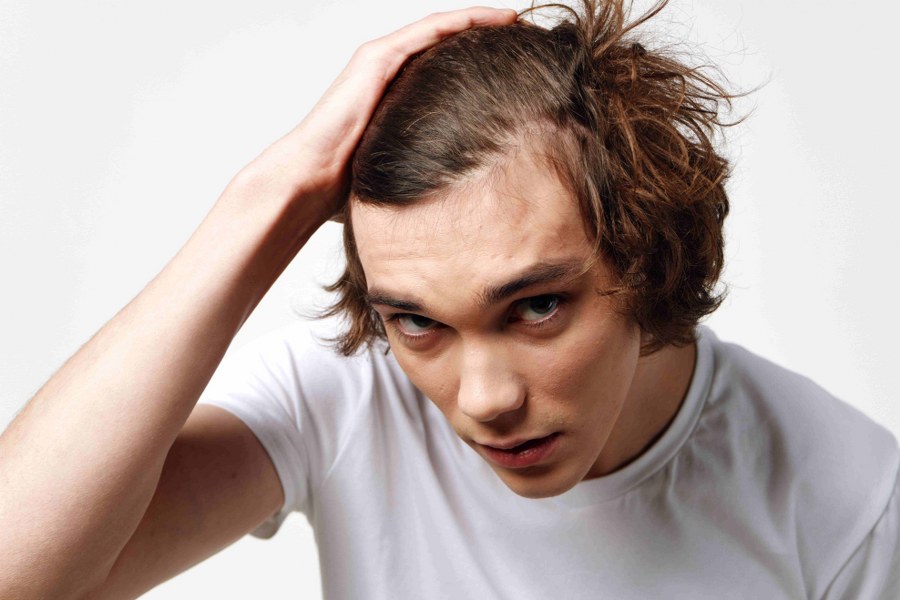Introduction
You’re in your 20s-career just starting, confidence high, life moving fast. Then, one morning, you notice your hairline creeping back or your crown thinning. Panic sets in.
Isn’t baldness supposed to happen after 40? Not always.
Welcome to the reality of male pattern baldness (androgenetic alopecia) , which can begin as early as your late teens or early 20s. The good news? If you act early, you can slow it down, manage it, and even regrow hair in some cases.
Let’s break this down like a dermatologist would- causes, signs, early actions, and long-term solutions.
What is Male Pattern Baldness?
Male pattern baldness (MPB) is a genetic and hormonal condition where hair follicles shrink over time. This happens because of dihydrotestosterone (DHT), a byproduct of testosterone.
- DHT binds to hair follicles, causing them to miniaturize.
- Hair grows thinner, weaker, and eventually stops growing.
- The process is progressive, meaning it won’t reverse on its own.
Signs of Early Baldness in Your 20s
- Receding Hairline – Especially at the temples.
- Thinning Crown – Bald spot forming on top of the head.
- Excessive Shedding – More hair in your shower drain or pillow.
- Miniaturized Hair – New growth looks thin, weak, and patchy.
- Widening Part Line – Scalp becomes more visible in bright light.
If you notice 2 or more of these signs in your 20s, it’s time to act early intervention is key.
Why Early Action Matters
Many men ignore the first signs of baldness until it’s too late. By then, hair follicles may be permanently damaged, making regrowth impossible.
The earlier you start, the more hair you can save.
Treatments work best on thinning hair, not shiny bald patches.
Think of it like protecting your investment: acting early preserves your confidence, appearance, and long-term options.
What You Can Do in Your 20s
See a Dermatologist / Trichologist
Self-diagnosis isn’t enough. A specialist can:
- Confirm if it’s male pattern baldness or temporary hair loss.
- Suggest medical treatments tailored to your stage.
- Track your progress with scalp scans.
Medical Treatments
These are dermatologist-approved, scientifically backed solutions:
Minoxidil (Topical Solution / Foam)
- Increases blood flow to hair follicles.
- Promotes thicker, stronger regrowth.
- Needs consistent use (2–3 months for results).
Finasteride (Oral Tablet)
- Blocks DHT, the hormone responsible for hair follicle shrinkage.
- Proven to slow down or stop hair loss.
- Must be taken under medical supervision.
Combination Therapy
- Using minoxidil + finasteride together is often the most effective.
In-Clinic Treatments
Dermatologists may also suggest advanced options:
PRP (Platelet-Rich Plasma) Therapy
- Use your blood’s growth factors.
- Stimulates follicles for better regrowth.
- Usually done in multiple sessions.
Low-Level Laser Therapy (LLLT)
- Improves circulation and hair density.
Microneedling
- Enhances absorption of growth serums and stimulates collagen.
Lifestyle Habits That Support Hair Health
Even with genetics playing a role, lifestyle makes a big difference.
- Balanced Diet: Include protein (eggs, fish, lentils), iron, zinc, and vitamins.
- Stress Management: Stress accelerates hair loss; try meditation or workouts.
- Sleep: 7–8 hours for healthy hormone balance.
- Avoid Harsh Styling: Tight hairstyles, heat tools, and chemical treatments damage hair further.
- Quit Smoking: Nicotine reduces scalp circulation and weakens follicles.
Hair Transplant (For Advanced Cases)
If you already have significant baldness, hair transplant surgery is an option.
- FUT (Follicular Unit Transplant): Strip method, more invasive.
- FUE (Follicular Unit Extraction): Modern, scarless, natural results.
But remember-ransplants are last-resort solutions. The best results come when you start treatments early and maintain existing hair.
